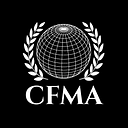An introduction to the Federal Reserve
Commonly referred to as “the Fed”, the Federal Reserve is the United States’ central bank. Established in 1913, the Federal Reserve serves to conduct monetary policy, ensure the financial stability of markets, and supervise financial institutions. With a Congressional mandate, the Federal Reserve is able to achieve its goals of maximum employment, stable prices, and moderation of long-term interest rates.
Before providing an overview, first a brief history. Discussions of a national bank were highly controversial throughout the late 18th and 19th centuries. With staunch opponents such as Thomas Jefferson and Andrew Jackson, the national bank failed to become a stronghold of American governance until the early 1900s.
In 1907, the first global financial crisis sparked a monetary reform movement spearheaded by banker J.P Morgan. These efforts resulted in the 1913 Aldrich-Vreeland Act, which established the Federal Reserve.
Given its tumultuous birth, the Federal Reserve was constructed so as to accommodate national economic interests. Therefore, the Federal Reserve is structured as a network of twelve regional banks, all of which respond to a single governing body located in Washington D.C. There are seven people on this board, a Chairman and six members, all appointed by the president and confirmed by the Senate.
One special component of the structure includes the Federal Open Market Committee, or FOMC, a rotational group of presidents from the regional banks who make key decisions about interest rates.
Interest rates are defined as the price of borrowing money. The Fed is able to contract or grow the economy by adjusting interest rates. As the “banker’s bank”, the Fed lends money to all U.S. banks at a certain interest rate, this rate is reflected by the rates your bank lends you.
When the rates are increased, banks are attracted to parking money in the Federal Reserve, but decreasing rates incentivizes banks to take money out of the Federal Reserve. Therefore, in a lower rate environment, the banks have more money on their balance sheets to lend out.
For example, during the Great Recession of 2009, the Fed dropped interest rates to 0% in hopes of encouraging consumer spending.
Conversely, when the economy is strong, people spend more, causing inflation. If the rate of inflation gets too high, then prices skyrocket and the economy crashes. So when things are going too well, the Fed raises interest rates to keep the economy stable.
By raising and lowering interest rates, the Fed tries to balance the American financial situation.
The Federal Reserve is not to be confused with the United States Department of the Treasury, which serves to collect taxes, manage government revenue, and provide economic advice to the president. That being said, the two work together in order to create economic stability and raise funds.
Additionally, because the Federal Reserve is a nonprofit company, after its expenses are paid, any remaining profits are paid to the Department of the Treasury. The Department of the Treasury then uses that money to fund government spending.
During the coronavirus crisis, the Fed made large asset purchases on the open market by adding newly created electronic dollars to the reserves of banks like Wells Fargo and Morgan Stanley. In exchange, the Fed received large amounts of bonds. When the U.S. Department of the Treasury looked to fund the government’s Care Act, they were able to use these profits from the Federal Reserve.
